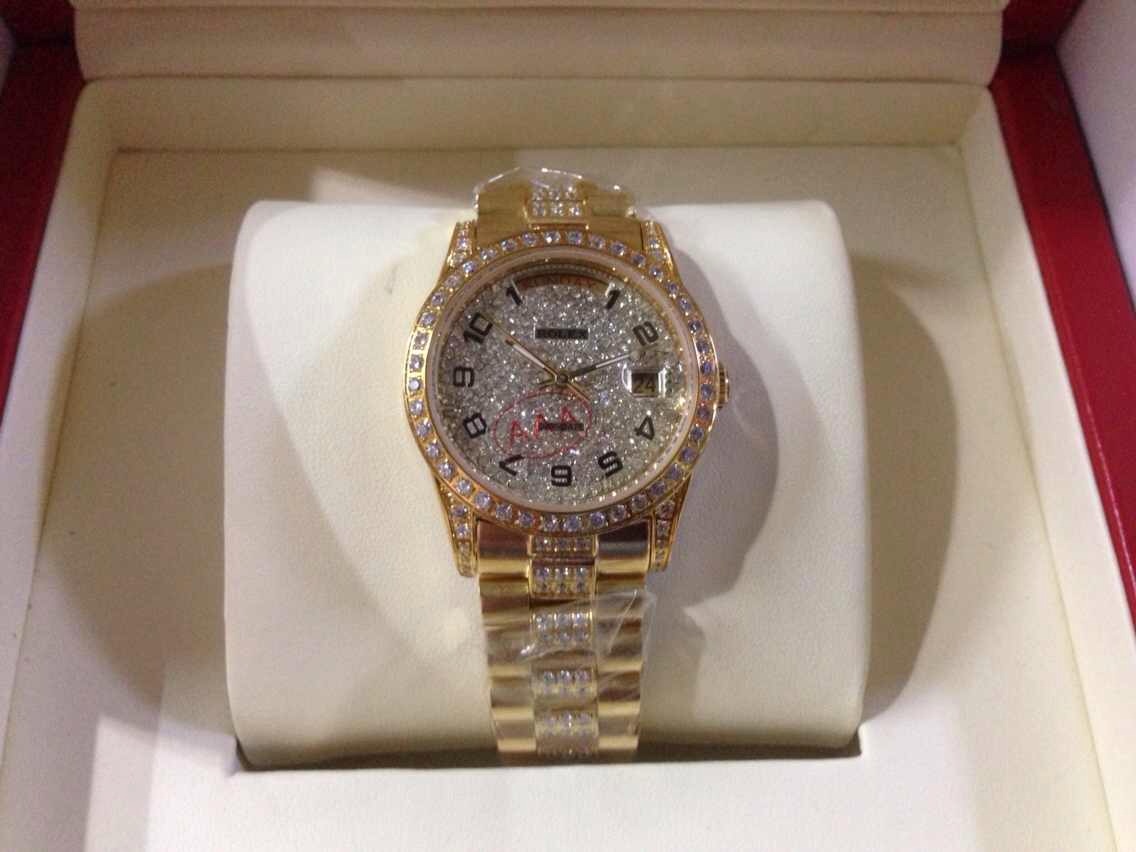If the Rolex you’re wearing isn’t very conspicuous, adding diamonds will help make it more eye-catching. In fact, Rolex uses some of the best diamonds and expert setting techniques to make sure your icy watch shines brighter than others. Today, we’ll give you an in-depth look at the process of making a Rolex diamond watch. 
It may not be surprising that Rolex only uses the highest quality diamonds on the market. When you shop for a diamond Rolex watch, it will only use diamonds with IF clarity. To provide you with some background, the clarity grades range from 0 to 10. Zero (also known as IF) is the clearest and is considered to be flawless. To receive an IF certification, a diamond must be free of inclusions or flaws that cannot be seen even under a 10x microscope.
Another feature that Rolex takes into consideration when choosing a diamond is color. While you may assume that all diamonds are just white, there is in fact a fairly natural range of color, even within the white diamond category. When it comes to grading the color of a diamond, the grading ranges from D to M, with D being extremely white and considered “colorless,” while M has a fairly distinct yellow tint to it.
When it comes to selecting diamonds for a replica watch, Rolex only utilizes the first four color grades, D, E, F, and G. So why doesn’t Rolex only use all-white, colorless diamonds? Well, the reason is that D, E, and F are actually the same to the naked eye, which means that only a trained gemologist can tell the difference when looking at them up close. In addition, diamonds naturally reflect color. Hence, the use of a G-grade diamond will not really impact your eye’s perception of its color in the case of a gold diamond Rolex watch. Yet, we can only conceive that for their white gold and platinum fake watches, Rolex may only use D-grade diamonds to ensure that they are as bright and cool as possible.
While color and clarity are major factors in determining a diamond’s value and overall appearance, the way a diamond is set greatly influences its ability to capture light and showcase all of its best qualities. To ensure that their diamonds shine the brightest, Rolex uses two important techniques when setting a diamond into a watch. 
While rolex doesn’t publish a lot of information about how they choose or set their diamonds, experts concur that Rolex uses two advanced settings, the first being the “4 claw” setting. This unobtrusive setting lets you see more of the diamond by minimizing metal coverage. This allows Rolex to get more light on the diamond and make it sparkle.